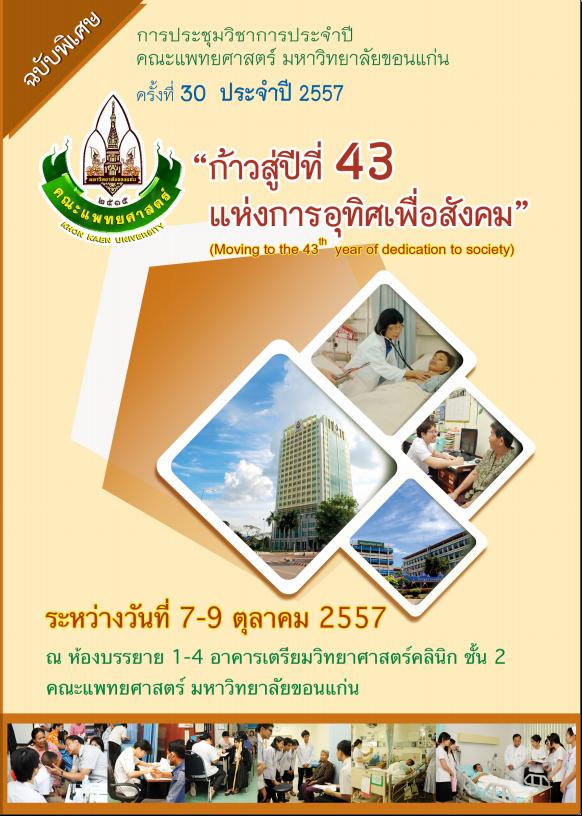Critical Congenital Heart Disease Screening in Neonates in Srinagarind Hospital
Keywords:
Critical congenital heart disease, Pulse oximetry screening, NeonatesAbstract
Background : Critical congenital heart disease is a group of the most serious conditions which can be cause of death in neonates. Early detection and diagnosis of critical congenital heart disease is necessary for the treatment plan and outcomes. Screening with pulse oximetry is considered as an adjunct to prenatal diagnosis, physical examination and clinical observation.
Objectives: 1) To identify the prevalence of critical congenital heart disease in neonates by screening with pulse oximetry as an adjunct to prenatal diagnosis, physical examination and clinical observation
2) To determine the accuracy of pulse oximetry in screening of critical congenital heart disease in neonates
Methods: This was a prospective descriptive study in Srinagarind Hospital, Faculty of Medicine, Khon Kaen University.Critical congenital heart disease was screened in healthy neonates, born after 35 weeks of gestation with no symptom of critical congenital heart disease, using Masimo pulse oximeter. The probe of pulse oximeter was placed on right hand and any foot (2 extremities) at the age of 24 hours or before discharge. Positive pulse oximetry screening was followed by complete clinical examination and echocardiography. If pulse oximetry screening was negative, parents would receive information paper, explained how to observe any symptom of critical congenital heart disease. Pulse oximetry screening was defined as false-negative when a diagnosis of critical congenital heart disease was made after 1-2 months at followed up period.
Results: During the study period between February and October 2013, there were 1,735 live births whereas 1,339 of them were eligible for pulse oximetry screening. A total of 396 neonates were excluded from the study: two cases with prenatal diagnosis of critical congenital heart diseases, two cases with clinical diagnosis of critical congenital heart diseases before pulse oximetry screening, and the rest were admitted to neonatal intensive care unit and/or special care nursery within 24 hours of life with other conditions. Among 1,339 cases, 254 cases were withdrawn from the study: 238 cases did not correctly receive pulse oximetry screening, and 16 cases could not be followed post-discharge from hospital. Finally 1,101 neonates were included and received pulse oximetry screening. All of them had negative results. There was no critical congenital heart disease diagnosed after discharge. Therefore, the prevalence of critical congenital heart disease in neonates by screening with pulse oximetry could not be calculated and the accuracy of screening method could not be evaluated. However, the prevalence of critical congenital heart disease in neonates born at Srinagarind hospital during the study period was 2.3 per 1,000 live births.
Conclusion: Critical congenital heart disease in neonates screening by pulse oximetry was not useful as an adjunct to prenatal diagnosis or physical examination and clinical observation when implement in Srinagarind hospital, a supra-tertiary university hospital, due to the diagnosis can be made earlier by specialist and sufficient health care provider.



